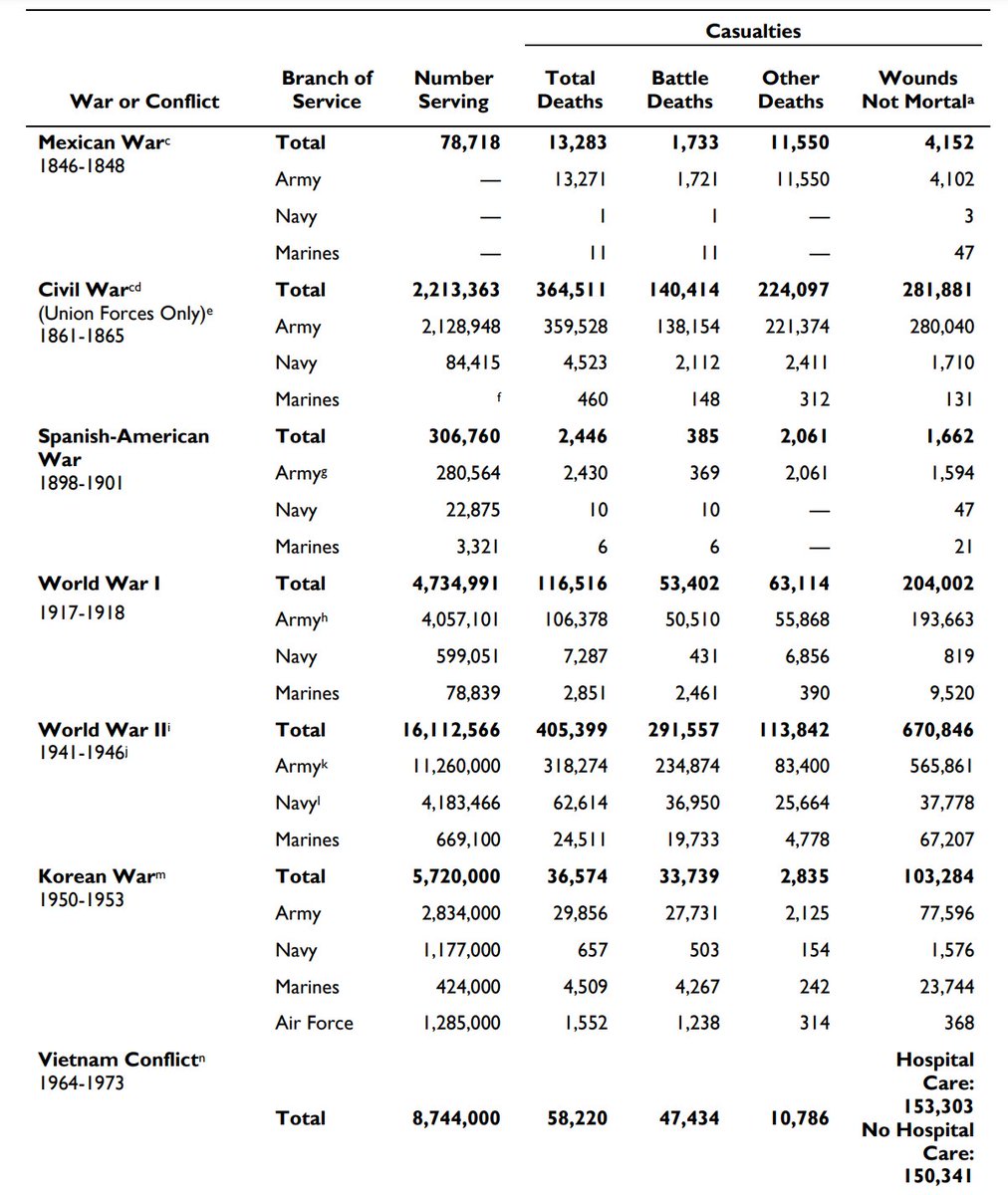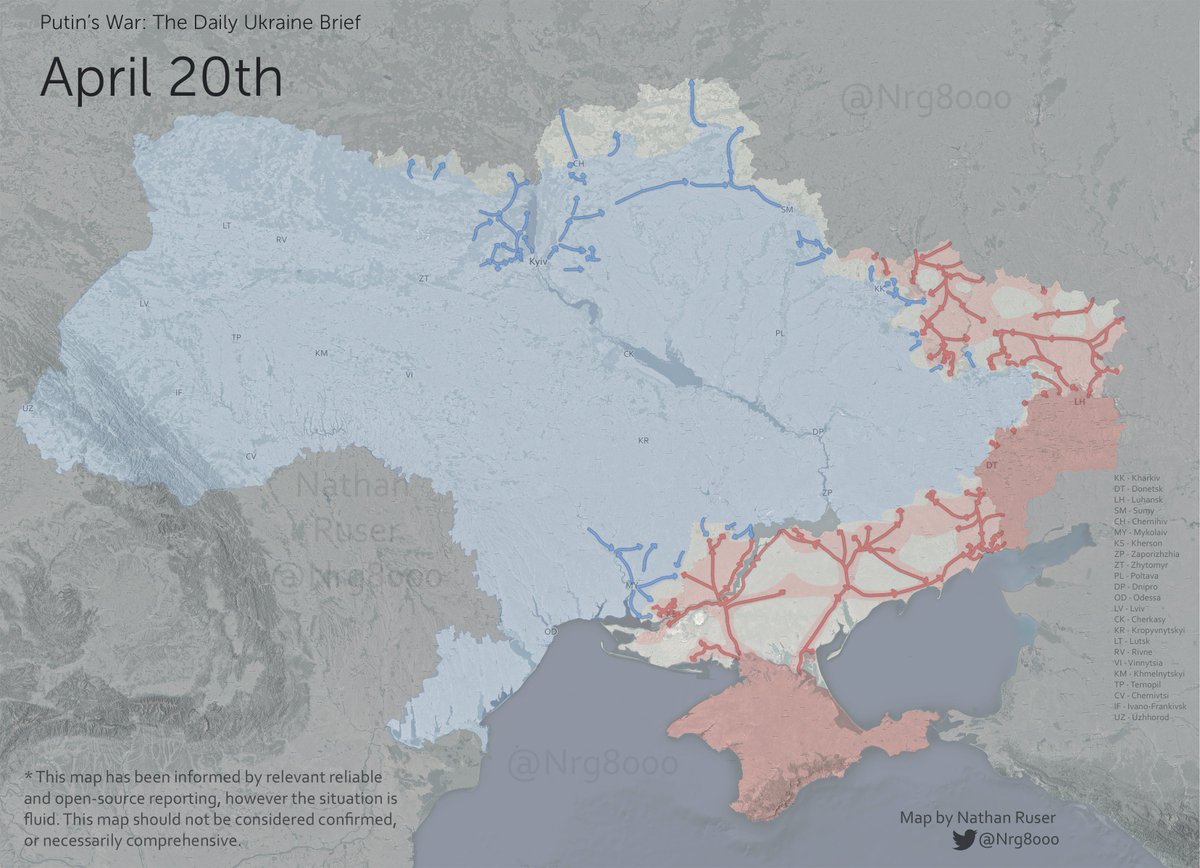
Thoughts on Russian losses. A thorny subject I've stayed away from because its difficult to tackle and the information gaps are vast. Numbers get thrown about with broad ranges, and it is hard to say what to make of these estimates, or guestimates. Thread. 1/
The numbers of most interest are killed in action (KIA) and total casualties. How you get there is going to be closely tied to your assumptions about KIA, and the ratio of wounded in action (WIA) to KIA. Here is a brief blog post from C. Lawrence. 2/ dupuyinstitute.org/blog/2016/10/2…
Here is another table from a CRS report to consider in devising plausible ranges despite the lack of data. sgp.fas.org/crs/natsec/RL3… 3/ 

Also, some militaries report more wounded, and even some branches within the same military may report this a bit differently. Russians don't necessarily report wounded the same way we might. But this is getting into the weeds. 4/
There are other types of losses, POW, MIA, and a soldier could be taken off the line due to illness or non-combat related injuries, etc. These could further increase the gap between total casualties which degrade unit effectiveness and just KIA. 5/
Where I'm going with this is that KIA are likely to represent a fairly small share of total casualties. Some wounded may still fight, but units can be rendered combat ineffective by virtue of the number killed, wounded, and other casualty types. 6/
A fair ratio, assuming weak availability of field hospitals & poor combat medicine might be 3.5x WIA for every KIA. This is simplistic, ignores other casualty types & I'm just scratching the surface. For example, 10k KIA would result in 35k WIA, and a total of 45k casualties. 7/
As one potential data point, 1st Guards Tank Army figures published by UKR through March 15th could be genuine. They show 61 KIA, 209 WIA, 44 MIA, and 96 POW. This is during a high period of RU losses in the war. That's 3.4 WIA to KIA, and 5.7 overall.
https://twitter.com/RALee85/status/15261646082386247698/
So how can we figure what might be plausible Russian KIA and total casualties? First, its hard to go off of oblique official estimates and selective intel releases. Things won't add up. No good way to know what is being counted or how. Also, it can change over time. 9/
For example, it appears at some point US official BTG counts started to include the DNR/LNR units whereas before it seemed they did not. So the initial BTG counts of 125-130 may not have included the 'separatist' corps or Rosgvardia. 10/
Also, these estimates are done in ranges and with confidence levels. Governments typically release these figures without explaining the estimate range, or their confidence level in those figures. So you might be hearing a conservative or a high estimate. 11/
Combatants in war will often overstate opponent losses and understate their own, or not release those figures at all. This is to be expected. The numbers are intertwined with information operations, considerations of own troop morale, external support, etc. 12/
The first problem is figuring out Russia's initial force. As we've come to learn the average BTG size was probably not 800, or 750, but probably closer to 600. Not all units deployed as BTGs, but the main maneuver force was possibly 80-90k. 13/
Auxiliaries such as 'separatist' army corps, and Rosgvardia might be another 20-25k. And an unknown amount of non-BTG dedicated support units. These are difficult to estimate, but they would not dramatically inflate the force involved. 14/
Making a third of BTG formations combat ineffective (50% casualties) could require just 3.3k KIA. Indeed, 10k KIA could easily add up to 45k total casualties or more. 15k KIA would take it towards 75k. I'm using just 3.5 as a multiplier here (imagine applying x5.7). 15/
The problem with higher range KIA counts is that you quickly develop input/output problems. There are more casualties than could feasibly be involved in the fight. That is, certain numbers become implausible given the size of forces involved. 16/
What about Russian reinforcements? Well, assuming 10-15 BTGs additional from the rest of the force, and other sources like mercenaries, you might be looking at another 10-12k troops in the war during the second phase. It does not dramatically alter the picture. 17/
Alternatively, one could assume 150k forces massed on UKR borders on Feb 23rd (not 190k total op related force). Here I'm doing what I advised against, using opaque official figures, but I know it is tempting. 1/3 of that figure, as total casualties, could come from ~12k KIA. 18/
This is all circling around a target. Given the gaps, my own confidence is quite low, but I think some of the figures out there don't reconcile well. Based on what I suspect, but ultimately don't know, I think 7k is low, 15k is high, and 10-12k KIA might be the middle. 19/
To me this is a high casualty figure both relative to the potential size of the force involved, and Russian casualties in other wars. However, others might have a different take on this.
• • •
Missing some Tweet in this thread? You can try to
force a refresh





